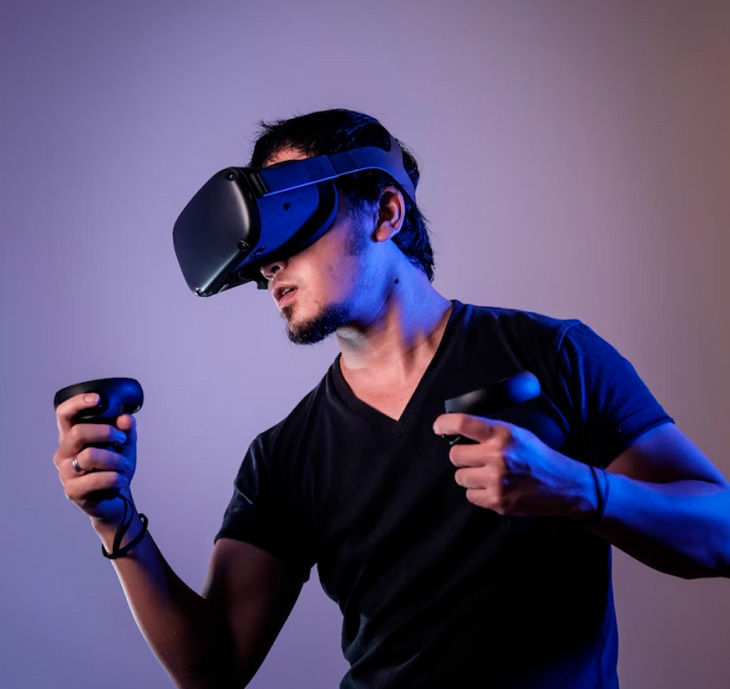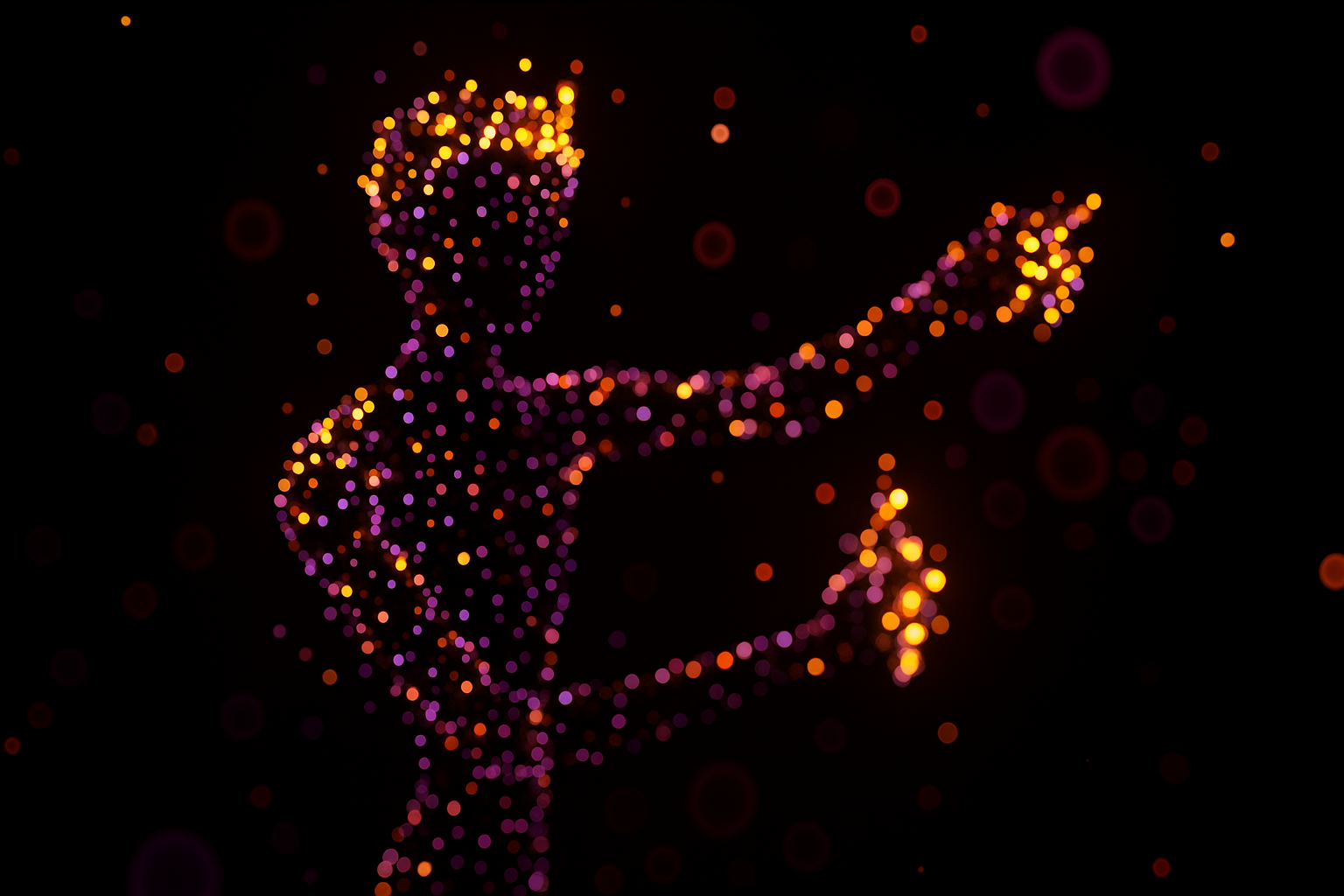By now, many of us have tried on virtual reality headsets and entered into other worlds. Some have used VR while playing games, either playing Beat Saber or getting beaten up in the boxing ring. While elsewhere, such as in healthcare, medical students and doctors are using virtual reality to practice surgeries and learn without needing direct patient interaction, when, while still facing the pandemic, such opportunities continue to be limited.
The feeling, while sometimes a bit dizzy-ing, is unlike anything else. When we enter virtual reality worlds, we genuinely feel we are there and our concept of our bodies shifts. In technical terms, we call this “embodiment”
“Embodiment” is the possibility in VR to visually substitute a person’s real body by a life-sized virtual one, seen from the person’s own first-person perspective. In other words, when we place a VR headset on, our virtual bodies at least momentarily substitute our real bodies. When we move, our virtual bodies move, and everything feels the same, even when we see our virtual bodies reflected in virtual mirrors. All of this induces a strong illusion of ownership and agency over the virtual body, which has proved to more broadly influence physiology, behaviour, attitudes and cognition.
Embodiment is also the most advanced aspect of VR and it means that we can create experiences that are impossible to replicate in real life, leveraging illusion to shift perspectives. We encourage you to listen to our co-founders Mel Slater, Mavi Sanchez Vives and Bernhard Spanlang, explain the concept of Embodiment and its applications:
The scientific journey to embodiment
The basic science behind embodiment is probably best described through the rubber hand illusion. This illusion is a common experiment in psychology, where through simultaneous stimuli of a rubber hand and your real hand (which you can’t see as your vision is blocked) creates the illusion in your brain that the rubber hand is your real hand. When the rubber hand is threatened people feel it as if someone would do something to their real hand.
The Rubber Hand Illusion – Horizon: Is Seeing Believing? – BBC Two
Mel Slater performed a variety of studies on embodiment, first establishing that this connection similar to the rubber hand also works in VR with your virtual body, leading to body ownership over your virtual body. After that we started to explore more and more effects of the virtual body on the behaviour
2008: Rubber Hand Illusion recreated in VR
2009: Place Illusion and Plausibility Illusion defined
2010: Body Ownership Illusion
2007: Being in a taller body makes more the user aggressive in negotiations
2013: Embodiment as a dark-skinned casually dressed avatar improves drumming skills compared to being embodied in a light-skinned avatar wearing a suite
2016: Tai Chi in VR used to reduce racial bias, was the first study to show this valuable implicit learning effect on racial bias.
2019: Self Conversation with Freud creates lasting change in views. Our trials recorded that 86% of the participants changed their way of thinking or feeling after having self-conversation embodied in Freud compared to 48% of those receiving a scripted conversation.
April 2020: An embodied perspective as a victim of sexual harassment in VR reduces action conformity in a later milgram obedience scenario, leading to the finding that men who were previously embodied in the women which was harassed, later gave half the amount of electric shocks to a women than the group of men who were embodied in a member of the harassment group.
2020: Social context can increase/decrease racial biases, which shows that if you are not careful when designing VR experiences and give people embodied in a black avatar a negative experience you can actually increase racial bias.
How do we leverage the power of embodiment?
Our team has shown over and over again that the brain can be tricked into thinking a whole virtual body is our actual body. This important scientifically-proven finding places a key role in how we build effective, powerful virtual reality products that create a positive impact on society. Our VR technology goes beyond gaming to:
Reduce implicit bias;
Improve emotional health; and,
Create empathy with victims of domestic violence
Ultimately, we are on a mission to create a more inclusive society. If you want to know more about embodiment, we encourage you to download our whitepaper. To work with us and experience our products, please provide us with your contact information.
Sources
2008: Rubber Hand Illusion recreated in VR2
Slater, M., Perez-Marcos, D., Ehrsson, H. H., & Sanchez-Vives, M. (2008). Towards a digital body: The virtual arm illusion. Front. Hum. Neurosci., 2. doi:10.3389/neuro.09.006.2008
2009: Place Illusion (PI) and Plausibility Illusion (PsI) defined3
Slater, M. (2009). Place Illusion and Plausibility can lead to realistic behaviour in immersive virtual environments. Philos Trans R Soc Lond, 364, 3549-3557.
2010: Body Ownership Illusion4
Slater, M., Spanlang, B., Sanchez-Vives, M. V., & Blanke, O. (2010). First person experience of body transfer in virtual reality. PloS one, 5(5), e10564-e10564.
doi:10.1371/journal.pone.0010564
2013: Embodiment as Jimi Hendrix improves drumming
Kilteni, K., Bergstrom, I., & Slater, M. (2013). Drumming in immersive virtual reality: the body shapes the way we play. IEEE Trans Vis Comput Graph 19, 597-605. doi:10.1109/TVCG.2013.29
2016: Tai Chi in VR used to reduce implicit bias
D., PD, H., & Slater, M. (2016). Virtual Embodiment of White People in a Black Virtual Body Leads to a Sustained Reduction in their Implicit Racial Bias. Frontiers in Human Neuroscience, 10:601. doi:10.3389/fnhum.2016.00601
2019: Self Conversation with Freud creates lasting change in views
Slater, M., Neyret, S., Johnston, T., Iruretagoyena, G., Crespo, M., Alabèrnia-Segura, M., Spanlang, B., & Feixas, G. (2019). An experimental study of a virtual reality counselling paradigm using embodied self-dialogue. Scientific reports, 9(1), 10903.
2020: Negative/positive experiences can increase/decrease biases
April 2020 An Embodied Perspective as a Victim of Sexual Harassment in Virtual Reality Reduces Action Conformity in a Later Milgram Obedience Scenario
Neyret, S., Navarro, X., Beacco, A. et al. An Embodied Perspective as a Victim of Sexual Harassment in Virtual Reality Reduces Action Conformity in a Later Milgram Obedience Scenario. Sci Rep 10, 6207 (2020). https://doi.org/10.1038/s41598-020-62932-w






